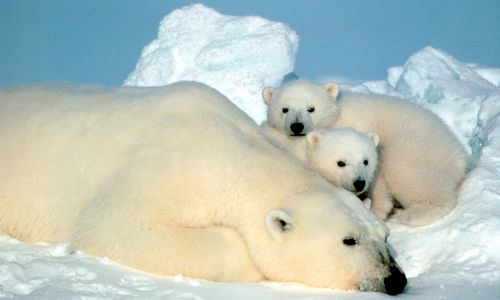Vagabondish is reader-supported. When you buy through links on our site, we may earn a small affiliate commission. Read our disclosure.
The Inupiat people who live in Northwest Alaska, near the Bering Straits, have discovered a new tourist-friendly way to tap into their culture’s literally ancient store of knowledge. Inupiat guides have begun taking groups and families into the waters to view the polar bears that wander the ice. In the process they raise awareness about the plight that the bears face as warming increases, bring money into the local community, and entertain travelers without leaving a footprint on the environment.
Sustainable ecotravel that brings you face to face with polar bears, boosting indigenous populations along the way without patronizing them? Yes please.
The Inupiat of Kaktovik have lived with the bears in relative “harmony since the beginning of time,” Inlangasak says… Now, however, they also view the bears as an important economic resource… Boat-based polar bear viewing in Kaktovik is a new effort to match local expertise and knowledge about polar bears with outside interest in seeing bears in their natural habitat… the village, in conjunction with the U.S. Department of Fish and Wildlife, which manages the nearby Arctic National Wildlife Refuge, will draw up a management plan to regulate polar bear tourism.
Polar bears are listed as a threatened species in anticipation of global warming-driven habitat erosion. Some models show the species going extinct within 50 years. Those predictions are probably a little pessimistic but that’s not exactly a consolation. “Oh don’t worry – we have 80 years before polar bears disappear forever” is hardly an argument. Inupiat and other Inuit groups have gone so far as to suggest that species extinction makes global warming a violation of their human and cultural rights.
In the meantime, Alaskan polar bear tourism will continue to grow. There’s already a local plane company that flies tourists into the village, and dozens of people are taking boats into the water to view the bears every week. This is usually where we’d suggest getting there before it becomes a popular thing and the crush ruins it for everyone. But honestly at this point we’re just hoping the species lasts long enough for that to become a problem.



